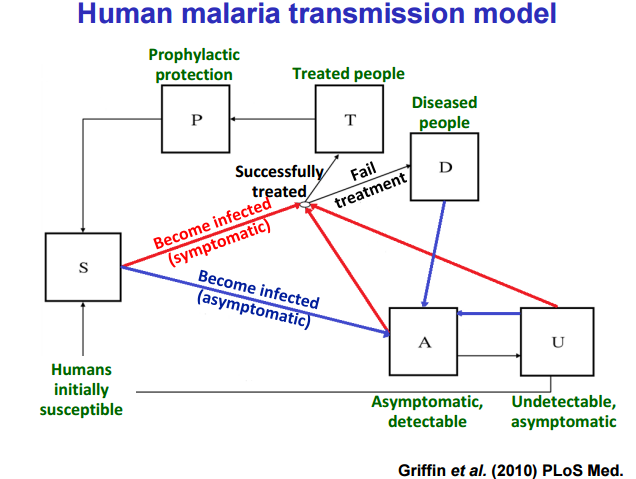Mathematical Modeling as a Tool in the Fight Against Malaria The study of infectious disease epidemiology has had a fairly long history. For several hundred years, scientists have studied disease outbreaks. Notably, Ronald Ross and Daniel Bernoulli produced various models to accurately predict and track the spread of infections throughout a human population. These models, which were applied to diseases such as smallpox and plague, took into account several important features of the outbreak including the number of people infected and the percentage of the vector (the insect that transmits a disease to humans) containing the actual pathogen. One of the most prominent diseases to which models have been applied is malaria, which is caused by the protozoan Plasmodium. Dr. John Marshall, assistant professor in the School of Public Health at the University of California, Berkeley, has for several years been using modeling to predict the outcomes of certain control strategies for malaria. Malaria follows many general rules used in non-specific modeling of disease transmission (see Figure 1), but has some unique aspects like incubation period (the time in which the parasite needs to grow inside the mosquito). The models account for host parameters including whether the patient is symptomatic, the patient’s immunity and the patterns of how people travel. This last tenet is especially important as human population movement affects how malaria itself actually spreads. Vector parameters contribute to the model as well, such as how long the mosquito lives and its sensitivity to climate and geography. Ultimately, the model can be tested against data from a real outbreak and then tweaked to fit the data more precisely.  Figure 1: Complexity of the Malarial Transmission Model. This diagram represents the factors that must be accounted for when making predictions about the spread of malaria through human populations. Important factors include whether the patient shows symptoms that doctors can see and if the patient can be treated in time.  Earthern pollinator habitat wall Photo credit: Lisa Kuder Earthern pollinator habitat wall Photo credit: Lisa Kuder Did you know? There's a new bee habitat wall located at the University of Maryland, Arboretum Outreach Center. The main purpose for the bee wall is to raise public awareness of wild pollinators and to monitor campus bee populations. For pics and details please take a look at the blog by Entomology's PhD student Lisa Kuder advised by Dr. Dennis vanEngelsdorp. |
Categories
All
Archives
June 2024
|
Department of Entomology
University of Maryland
4112 Plant Sciences Building
College Park, MD 20742-4454
USA
Telephone: 301.405.3911
Fax: 301.314.9290
University of Maryland
4112 Plant Sciences Building
College Park, MD 20742-4454
USA
Telephone: 301.405.3911
Fax: 301.314.9290

 RSS Feed
RSS Feed




